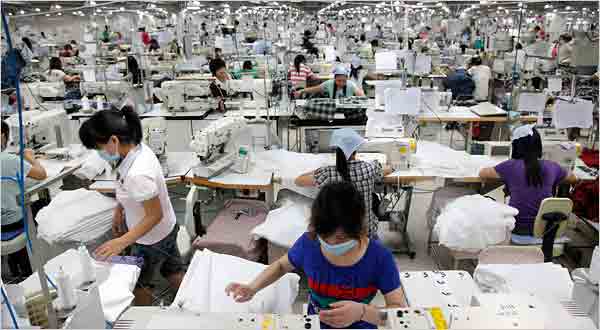
Beijing, China (BBN)-China’s economy showed signs of flagging in June, with gauges of factory activity missing market expectations and suggesting weakening momentum in the world’s second-largest economy.
Economists said more stimulus policies, especially fiscal measures such as more tax breaks and infrastructure spending, are needed to prop up growth, which they said likely continued to slow during the second quarter of the year, reports The Wall Street Journal.
China’s official manufacturing purchasing managers index remained at 50.2 in June, the same as in May, the National Bureau of Statistics said Wednesday. The reading stood above 50, the level which separates expansion from contraction, but it missed the median 50.4 forecast from a Wall Street Journal poll of 11 economists.
A competing index by HSBC and research firm Markit, also released Wednesday, rose to 49.4 in June from 49.2 the previous month, but came in lower than a preliminary reading of 49.6 reported a week ago.
The lackluster readings follow the recent release of other statistics from trade to industrial profits that portray an economy struggling to find its feet. A bright spot for much of the year, the country’s stock markets have tumbled over the last two weeks, adding to uncertainty about the economy.
“We are concerned that the second-quarter economic growth might miss the government bottom line of 7 per cent,” said ANZ economist Zhou Hao. “Fiscal policy should take the driver’s seat to help restore market confidence over the economic outlook.”
China’s economic growth slowed to 7 per cent in the first quarter of the year, its weakest performance in six years. Beijing has introduced many stimulus measures, relaxing monetary policy, boosting spending on infrastructure projects and providing tax breaks for businesses and consumers.
In the latest move, the central bank on Saturday cut the benchmark one-year lending and deposit interest rates for the fourth time since November and reduced the required amount of funds that certain banks need to keep in reserve in an effort to encourage more lending to struggling corporate borrowers.
The four interest-rate cuts and other monetary easing, however, haven’t done enough to lower borrowing costs, especially because the economy faces increased deflationary pressure, Jacqueline Rong, an economist with BNP, said.
The PMI readings showed further challenges for growth. Both new orders and export orders fell in June from a month ago, suggesting further headwinds for growth, said Zhang Liqun, an analyst at the China Federation of Logistics and Purchasing, which issues the official PMI data with the statistics bureau.
Zhang also said that the debt crisis in Greece will cast a shadow over China’s exports outlook and that Beijing needs to roll out more measures to increase investment and boost domestic demand.
The HSBC PMI pointed to problems in manufacturing employment, with “the sharpest rate of job shedding across the sector since early 2009,” according to Annabel Fiddes, an economist at Markit. Chinese manufacturing employment declined for the 20th consecutive month in June, Markit said in a statement.
On a positive note, the official nonmanufacturing purchasing managers index also released Wednesday rose to 53.8 in June from 53.2 in May, lifted by healthy construction activity, the statistics bureau said.
BBN/SK/AD